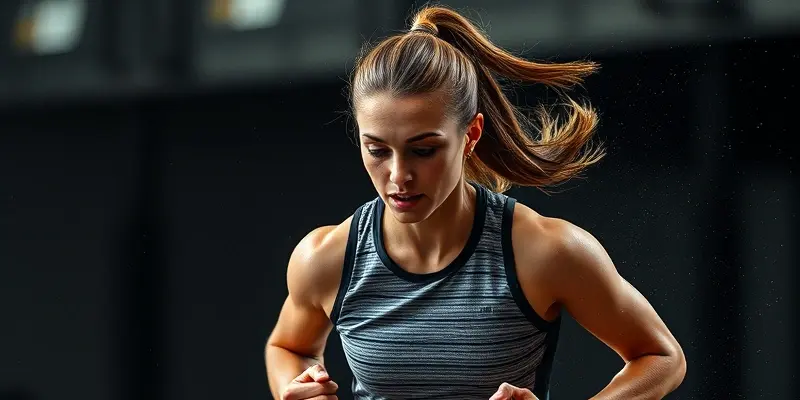Forefoot Striking vs. Heel Striking: Which Foot Strike Pattern Supports Better Recovery and Injury Prevention?
Running is a journey—one filled with personal records, challenges, and sometimes, unexpected injuries. Whether you’re lacing up for your first 5K or prepping for your next marathon, the way your foot meets the ground (your “foot strike”) directly influences your risk of injury and your recovery. But does switching to forefoot striking or sticking with heel striking truly make a difference? Let’s explore the science and practical advice, so you can keep running strong.
Understanding Foot Strike Patterns
Before you consider changing your stride, it helps to know what the options mean.
| | Forefoot Striking | Heel Striking ||———————|———————————–|——————————-|| Initial Contact | Ball of foot lands first | Heel touches down first || Shock Absorption| Calf and foot muscles work harder | Knees and hips absorb more || Typical Injuries| Achilles, calf strains, metatarsalgia | Runner’s knee, shin splints, stress fractures || Common Users | Sprinters, some distance runners | Most recreational runners |
Forefoot strikers land on the front part of their foot. Heel strikers—by far the majority—land heel-first. Each technique brings different muscle groups and joints into play.
Injury Risks and Prevention
Pros and Cons
- Forefoot striking:
- Reduces stress on knees but loads the calves and Achilles tendon more.
- Lower risk of runner’s knee; higher risk of calf/Achilles injuries.
- Heel striking:
- Eases the load on the Achilles but increases shock through the knee and hip.
- Lower risk of Achilles issues; higher risk of knee pain and some stress fractures.
The best injury prevention strategy? Don’t force a major change overnight. The body adapts gradually; sudden shifts can overload unprepared muscles and tendons.
Practical Advice
- Assess your history. If you repeatedly get knee pain, experimenting with forefoot striking (under supervision) could help.
- If you have calf or Achilles problems, heel striking may be protective during rehab.
- Always listen to your body’s signals—pain that persists is a signal to slow down and consult a pro. For a comprehensive guide on managing and preventing injury, check out our injury recovery checklist.
Recovery Strategies
No matter your strike pattern, these principles support optimal recovery:
Gradual Adaptation
Thinking about switching? Transition slowly. Try short intervals, increase over weeks, and track how your legs and feet feel.
Strengthening & Mobility
- Calf, foot, and hip exercises: Strengthen muscles to support the new stresses.
- Flexibility routines: Stretch calves, hamstrings, and plantar fascia regularly.
Nutrition for Recovery
- Protein-rich meals: Aid muscle and tendon repair.
- Anti-inflammatory foods: Berries, leafy greens, omega-3s (think salmon or chia seeds) can speed up healing.
- Stay hydrated: Proper hydration keeps muscles happy.
Rest Is Progress
Don’t undervalue rest. Microtears heal during downtime—schedule regular rest days and adjust running volume by no more than 10% per week.
Performance and Long-Term Health
There’s no “one-size-fits-all” solution:
- Speed matters: Forefoot striking can benefit sprinters and elite runners at high speeds. For most recreational runners, your natural stride is usually most efficient.
- Injury-prone? A running form specialist can analyze your gait, helping you make individualized tweaks rather than broad changes.
- Consistency trumps trendiness: Building a strong, resilient body is more about smart training than chasing the “ideal” foot strike.
Practical Tips: Choosing and Adapting Your Stride
Finding Your Natural Strike
- Observe your worn-out shoe soles or have someone film you running.
- If unsure, consult a professional for a gait analysis.
Should You Change?
- If you’re running injury-free and happy, you probably don’t need to change.
- If you’re stuck in a cycle of injuries, gradual adjustments—with a coach or physiotherapist—could help.
Tools & Motivation
- Use foam rollers, massage tools, and arch supports as needed.
- Set process goals: Track how much easier recovery feels or how consistent you stay—not just speed or distance.
Conclusion
Running form is personal. No foot strike pattern guarantees injury prevention or better recovery for everyone, but understanding your own stride—and listening to your body—can make a big difference. Focus on gradual, evidence-based changes and strengthen your whole kinetic chain for a resilient, happy running journey.
Have you experimented with changing your foot strike? Share your experiences with the GymPulse Club community below! Let’s keep learning—and recovering—strong, together.

